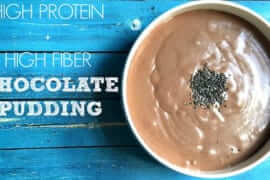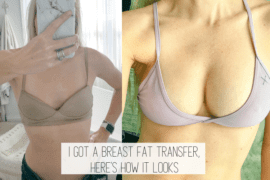What You Need to Know About Your Menstrual Products
“Crap!! I’m out of tampons!!!”
That used to be about my only concern when it came to period products. But after making the conscious choice to live a healthier lifestyle, my concerns became much greater. As my concerns grew from, “What’s in this food I’m eating?” to, “What’s in these products I use every day?” I began to wonder, “What’s in these feminine care products that I’m putting next to, and into my body each month?”
What I found out was shocking!
I learned some scary information about the chemicals and materials used in these products. I learned they may have been the culprits to some of my biggest complaints about my period. And I learned about the huge impact all the waste they are producing is having on our environment.
The more I learned, the more I felt (and continue to feel) the need to share. As corny as it may sound, this information is life changing, if not lifesaving.
I encourage all the ladies I meet to think about…
What’s in Your Menstrual Products
Would you guess that most conventional pads are made of around 90% plastic? It’s true, approximately 90% of traditional pads are made from plastic – an indestructible product that will remain in the environment visually polluting and damaging wildlife for hundreds of years.
Would you believe that bleached wood pulp, chlorine and synthetic materials (like viscose, rayon and polypropylene) can be found in most tampons? This is also true. These materials are used to disinfect, whiten and imitate cotton.
Unfortunately, using harsh chemicals such as chlorine produces toxic chemicals called Dioxin. Without getting all scientific, Dioxin is a residue of the chlorine bleaching process.
Here’s the scary part, Dioxin is classified as a carcinogenic, which means it has the potential to cause cancer. This residue can stay within the fibers, the same fibers you are putting in or next to your body, leading to prolonged exposure to this toxic substance. Dioxin settles in the fat cells of our bodies and stays there for the rest of our lives, building up over time. That means increased exposure means increased risk. Dioxins are listed as some of the most deadly chemicals created. It is listed by the EPA as the most toxic of all cancer-linked chemicals. Dioxins can be found in pesticides, plastics, detergents and cosmetics. Concerns have been raised about their impact on our health with respect to hormonal disruption, cancer, and heart & liver disease for more than a decade. Scary stuff!
Why Aren’t the Ingredients of Menstrual Products Posted
Because menstrual products are considered “medical devices” product manufacturers are not required to fully disclose the materials used. We believe women have the right to know what they are using in the most delicate part of their body, especially if it is having an effect on their health.
What Effects are These Materials Having
The effects of using traditional pads and tampons can be felt on the environment and on our bodies.
Personally, women have attributed these materials to issues such as:
- Vaginal dryness / irritation
- Allergic reaction / rashes
- Infection
- Heavier and/or longer periods
- Increased cramps / discomfort
- Toxic Shock Syndrome (Public Service Announcement: We urge everyone to learn the facts about TSS – even if you think you are already somewhat familiar, it may save your life or the life of someone you love.)
Globally, we face issues of waste, large amounts of toxic pollution into the environment in manufacturing, and the devastating damage to wildlife, marine life and landscape. North America alone sees approximately 20 billion, yes I said, “20 BILLION” pads, tampons and applicators deposited to landfills each year. Not to mention the hundreds of thousands that don’t make it to landfills, landing on our beaches. Heard of beach whistles? – These are not the kind of whistles you want your kids using!
Awakened with this knowledge the question then becomes…
Are There Any Better Options
Fortunately, women today have more options than ever before! Just look at the sea of products found in the feminine hygiene isle at your grocery. And most grocers don’t even carry the “good stuff!”
That said, it can be hard to sort through all of them to know which product(s) is right, and best for you.
“What’s the good stuff?” you ask.
Some of the most popular alternatives for period protection options include:
For those that appreciate the convenience of disposable products, there are organic tampons and natural pads. These products were designed to be bio-degradable and free of toxic chemicals and synthetics.
As the name suggests, these are pads made of cloth. Like conventional pads, cloth pads can be found in a variety of sizes, shapes, and absorbency levels. Unlike conventional pads, cloth pads come in an assortment of fun colors/patterns and make for a much “greener” period product. (1 cloth pad can replace approximately 120 disposable pads or tampons – imagine the space you could save in landfills!)
- Menstrual Cups – Finally, an alternative to tampons!
A menstrual cup is a flexible cup worn internally, but rather than absorbing menstrual fluid, and all other natural moisture (like tampons), it collects it. Other benefits include, up to 12 hours of wear time, they’re more absorbent than a super absorbent tampon, they work for light or heavy flow, and they can also dramatically cut your monthly expense and waste.
Offered in two different styles (a bell shaped cup and a Softcup) they provide options for those wanting the convenience of disposable or the eco-friendliness of reusable – all while being a safer option in regards to Toxic Shock Syndrome.
Not only do these options offer ladies a way to eliminate this extra exposure to harmful chemicals and reduce health risks but they can also provide relief from some of the most popular, pesky, period problems!
I’d love to hear from you, what are your most common period issues – do you think they could be caused by your products?
 Tara Bruley is the founder of BePreparedPeriod.com, a website designed to be a one stop shop for all things menstrual. Her mission is to empower ladies of all ages have a healthier, better period by providing numerous resources – resources that include an online store (with one of the largest selections of traditional, organic, and eco-friendly products), a library of helpful articles, a PeriodTalk Q&A forum and more. Connect with Tara on her website, Pinterest, Facebook and Twitter.
Tara Bruley is the founder of BePreparedPeriod.com, a website designed to be a one stop shop for all things menstrual. Her mission is to empower ladies of all ages have a healthier, better period by providing numerous resources – resources that include an online store (with one of the largest selections of traditional, organic, and eco-friendly products), a library of helpful articles, a PeriodTalk Q&A forum and more. Connect with Tara on her website, Pinterest, Facebook and Twitter.
Challenging all women to have a healthier, better period we are happy to offer a free copy of our Better Your Period Action Guide. Download it here.





